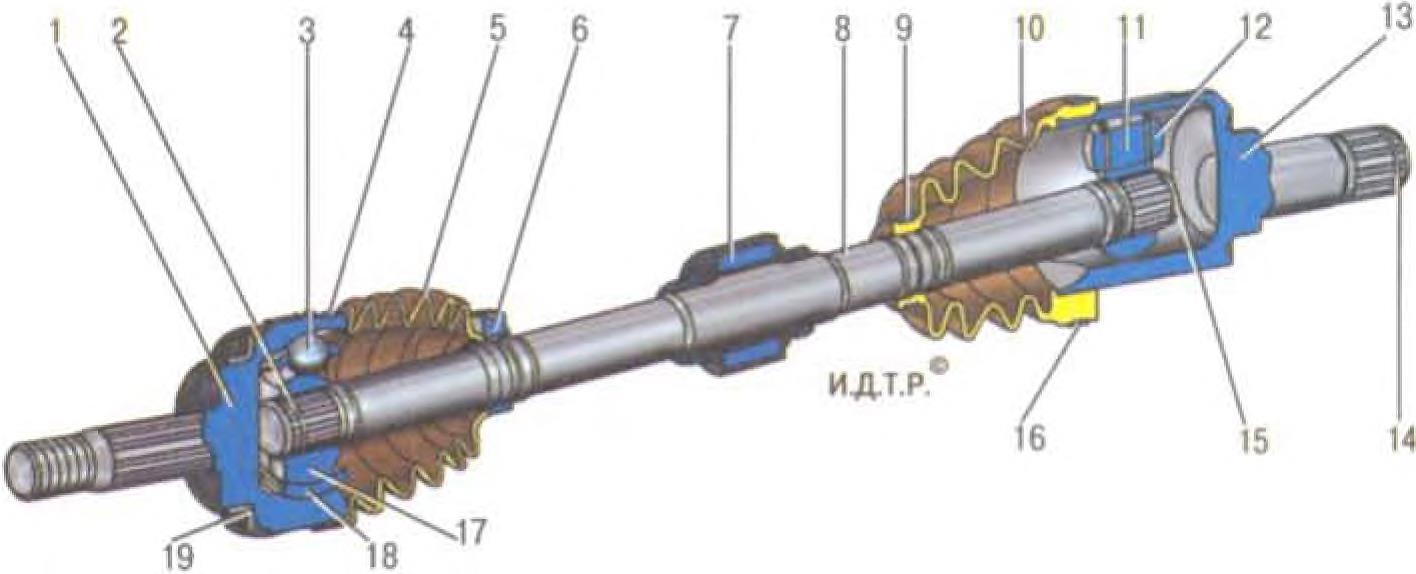
Rice. 6.14. Front wheel drive; 1 - outer hinge housing; 2 - retaining ring of the outer hinge cage; 3 - ball of the outer hinge; 4, 6. 9. 16 - clamps for fastening the cover; 5 - cover of the outer hinge; 7 - dynamic damper; 8 - front wheel drive shaft; 10 - cover of the internal hinge; 11 - hub of the internal hinge; 12 - inner hinge roller; 13 - body of the internal hinge; 14 - retaining ring of the inner hinge; 15 - retaining ring of the inner hinge hub; 17 - clip of the outer hinge; 18 - outer hinge separator; 19 - gear rim of the wheel speed sensor.
The front wheel drives consist of external and internal constant velocity joints (CV joints) connected by shafts 8. The external hinge allows only angular movements of the connected shafts. The internal hinge, in addition to the angular ones, also makes possible axial displacement of the shafts when the front wheels are turned and the suspension is working.
The Beerfield-type external hinge consists of a body 1, a separator 18, a cage 17 and six balls 3. Grooves are provided in the body of the hinge and in the cage to accommodate the balls. The grooves in the longitudinal plane are made along the radius, which ensures the required angle of rotation of the outer hinge. installed in the front wheel hub and attached to it with a nut.
The holder 17 of the outer hinge is mounted on the splines of the shaft 8 between the thrust shoulder and the retaining ring 2.
The internal hinge of the Tripod type consists of a body 13 and three rollers 12 on needle bearings, put on the pins of a three-pin hub 11. Grooves for the rollers are made in the hinge body. The three-spike hub is fixed on the shaft with a retaining ring 15, the rollers allow the hub to move in the grooves of the hinge body in the axial direction, so that the drive can be lengthened or shortened to compensate for the mutual movements of the suspension and the power unit. The splined tip of the inner hinge housing is fixed in the side gear of the differential with a snap ring 14.
Balls of one sorting group are installed in the outer hinge. All parts of the hinge are selectively matched to each other, so it is impossible to repair the hinge by replacing individual parts, and only the hinge assembly is supplied as spare parts, as well as a small repair kit that includes a retaining and thrust rings, a boot and clamps for fastening the boot and dynamic damper.
The inner hinge is delivered to spare parts in the form of two repair kits: a large one, which includes all the details of the hinge, and a small one, similar to the outer hinge repair kit.
To lubricate the hinges, a special lubricant with molybdenum disulfide is used (domestic analogue - SHRUS-4). The sealing of the hinges is provided by rubber covers 5 and 10, fixed on the hinge bodies with clamps 4,6,9,16.
The drive shafts of the left and right wheels are made of different lengths (the right one is longer), which is due to the layout of the engine compartment of the car (the main gear is shifted to the left relative to the longitudinal axis of the car) and therefore are not interchangeable. The hinges of equal angular speeds of both drives are the same. To reduce vibration in the transmission, dynamic dampers 7 are fixed with clamps on the drive shafts.
Useful advice
The drive hinges are very durable, their design life is almost equal to the life of the car. However, in operation, the drive hinges are often changed or repaired. Such work is quite expensive and laborious. In order to save a lot of money, regularly check the condition of the protective covers of the hinges and immediately replace them at the slightest damage. If water or dust gets into the hinge through a damaged cover, it will fail after several hundred kilometers. The sealed hinge wears out extremely slowly.
Source: Mitsubishi Lancer X Owner's Manual
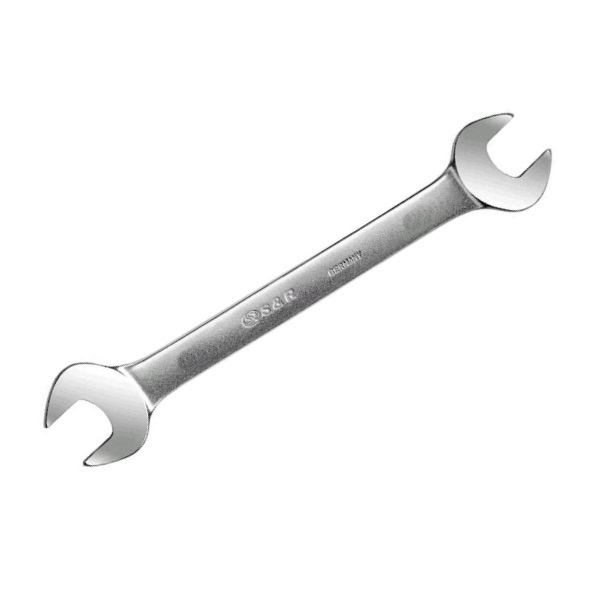
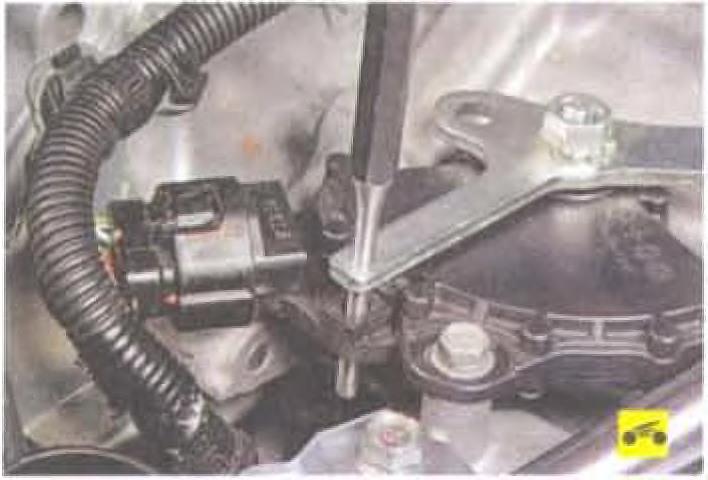
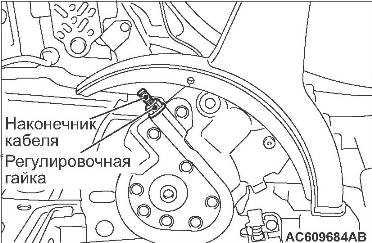
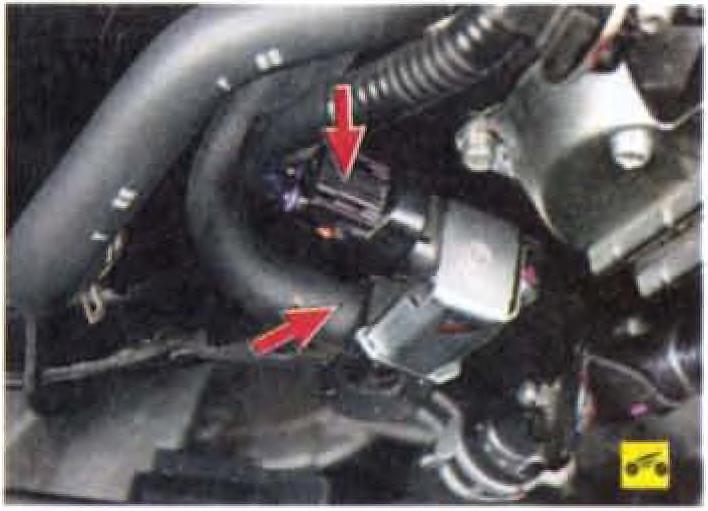
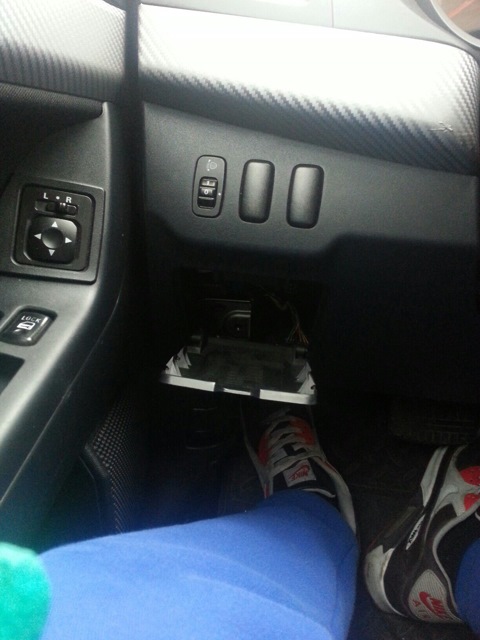
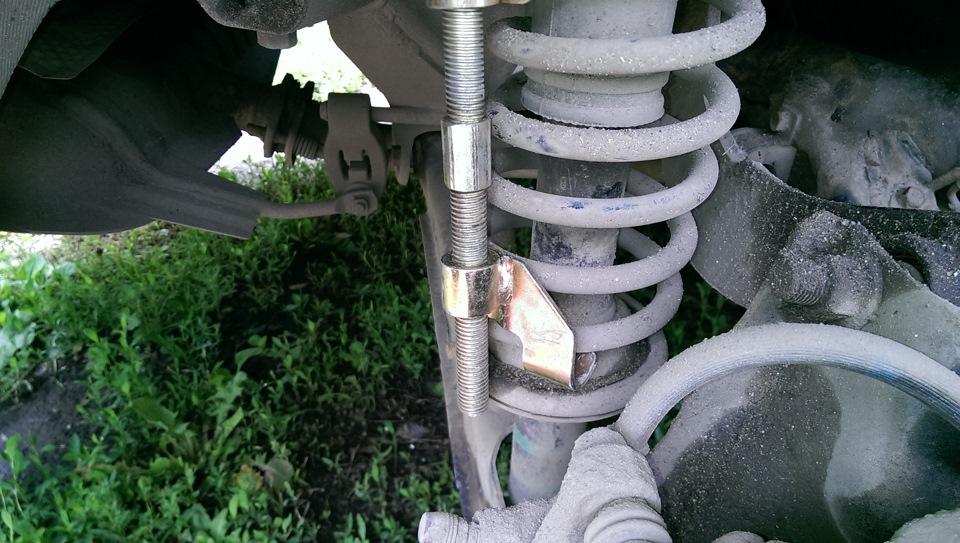
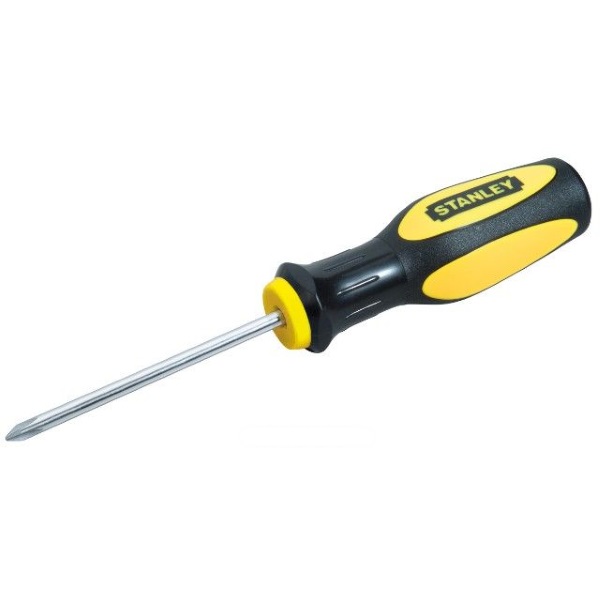
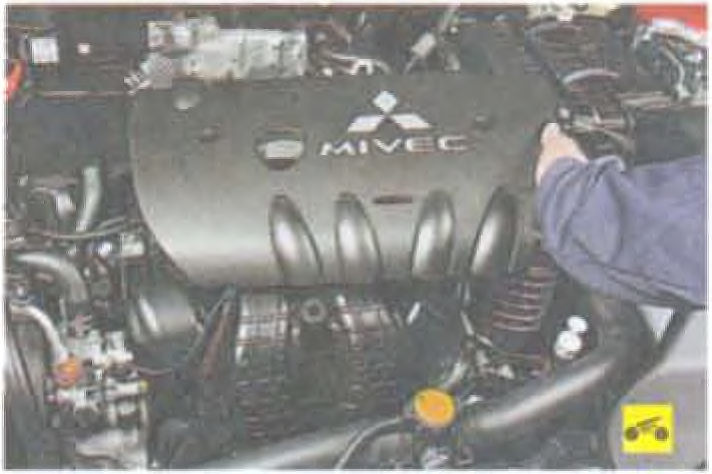
![IX [2000 - 2005]](/uploads/mitsubishi_lancer_2005_images_2.jpg)
![X [2007 - 2017]](/uploads/Mitsubishi_Lancer_Sedan_2007.jpg)
